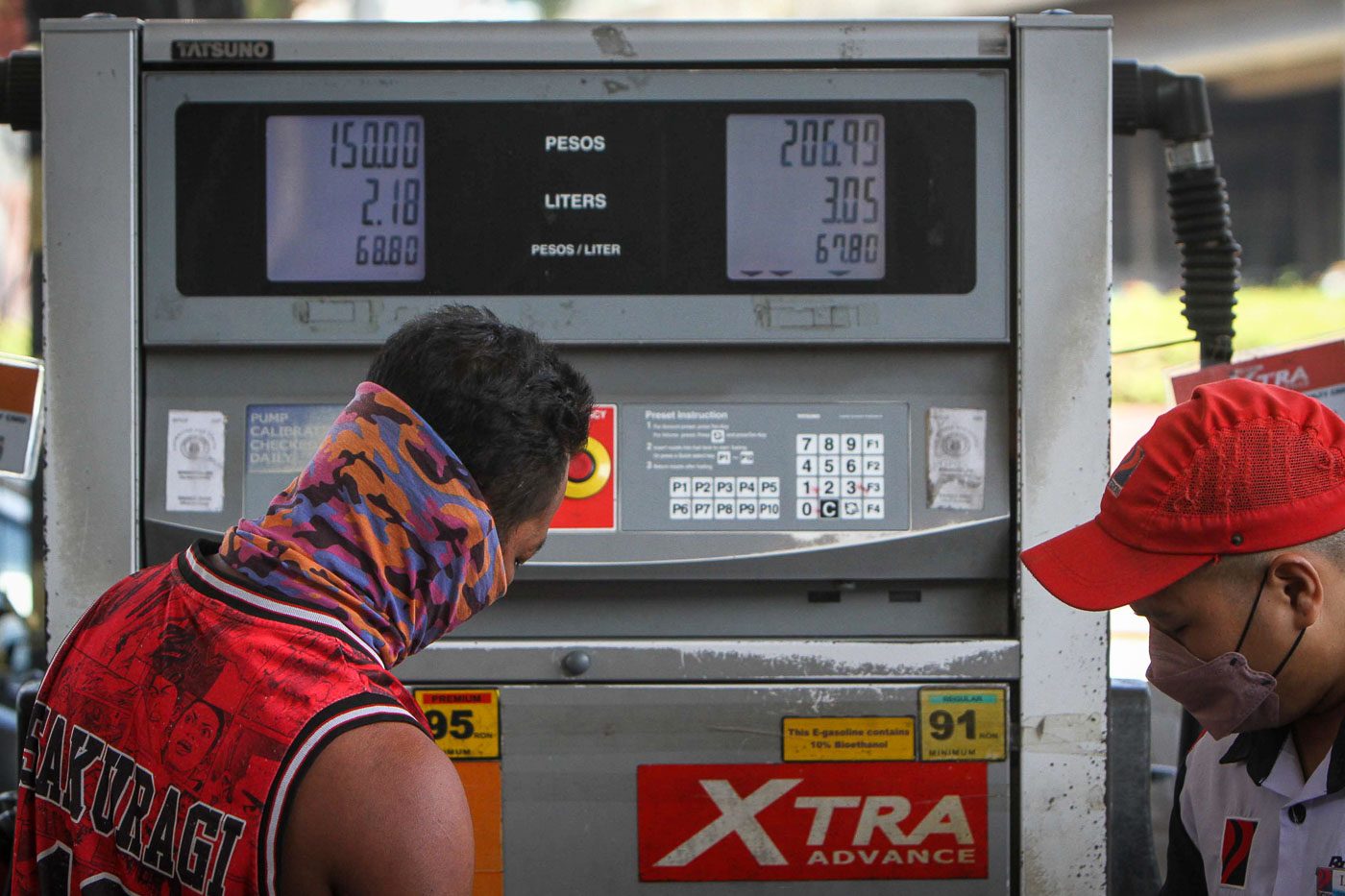SUMMARY
This is AI generated summarization, which may have errors. For context, always refer to the full article.

MANILA, Philippines – Inflation jumped to 6.1% in September, much higher than the 5.3% in August, the Philippine Statistics Authority said on Thursday, October 5.
It is the second straight month that the inflation rate climbed. In August, higher rice and fuel prices ended the Philippines’ six straight months of slowing inflation.
Year-to-date, average inflation stands at 6.6%, pushed further away from the government’s target range of 2% to 4%. The highest rate so far was 8.7% in January.
National Statistician Dennis Mapa said in a press briefing on Thursday that food and non-alcoholic beverages mainly drove the higher inflation in September, particularly cereals and cereal products with 14.1%. Rice falls under this category.
Rice is particularly significant because it has the highest weight in the commodity basket, meaning that swings in the price of rice can strongly affect inflation figures overall.
President Ferdinand Marcos Jr.’s decision to impose price caps on rice failed to slow down rice inflation, as it soared to a 14-year high of 17.9% in September. Mapa also noted that the move’s effectiveness was “mixed,” given that most of the varieties of regular-milled and well-milled rice monitored in September did not comply with the price caps.
Another reason for the increase in inflation was higher fuel costs. Throughout September, prices at the pump have been on the rise, prompting the government to release P2.95 billion in fuel subsidies for public utility vehicles.
Jeepney fares are also going up by P1 nationwide to help operators cope with elevated fuel prices. Mapa said this could have an effect on transportation inflation in October, through both the direct effect of higher jeepney fares for commuters and an indirect effect of raising costs for others who use jeepneys as a mode of transportation for goods and services.
“Ito ay tinitignan ng ating mga field offices ngayon kasi meron na tayong first week data collection, at ito ay magre-reflect naman doon sa October report ng inflation natin,” he said.
(Our field offices are monitoring this now since we already have the first week of data collected, and this will reflect in our October inflation report.)
How do we react to accelerating inflation?
The Bangko Sentral ng Pilipinas (BSP) earlier estimated inflation for September would settle within the range of 5.3% to 6.1%, citing higher prices of fuel, electricity, and key agricultural commodities, as well as a weakening peso.
The central bank’s inflation forecast for 2023 has also risen, with average inflation for the year now expected to reach 5.8% instead of the initial 5.6% estimate.
BSP Governor Eli Remolona Jr. also said inflation would likely fall within the government’s target range of 2% to 4% by November rather than September, as initially expected.
However, analysts have challenged the role and effectiveness that the central bank has played in the fight against inflation. Nicholas Mapa, senior economist at ING Bank, said the BSP’s rate hikes were ineffective against the supply-side pressures on inflation.
“This number just sort of proves to us that BSP rate hikes are largely ineffective against cost-push inflation,” Mapa said in an interview on ANC’s Market Edge on Thursday.
“Unless you address the underlying issues of supply-side bottlenecks or lack in supply, you’re not going to be able to fight off inflation. You’re using the wrong tool,” he added.
The BSP previously signaled a willingness to hike rates in its upcoming Monetary Board meeting in November. But Mapa further warned that if the central bank continues to hike policy rates, it would risk slowing down economic growth rather than stifling supply-side driven inflation.
“Just judging from the GDP (gross domestic product) numbers, we’re seeing that this economy’s slowed considerably, and if we’re not careful, we could see growth slow even further,” the economist said.
Rising inflation is seen as a key factor for the double-digit drop in Marcos’ approval rating in a Pulse Asia survey conducted in September.
Analysts noted that many Filipinos are feeling the burden of higher prices – something that Marcos himself admitted on Wednesday, October 4, in reaction to the survey numbers.
The President said: “Kaya hindi mo masisi ang tao. Talagang naghihirap sila eh (You cannot blame the public. They are really suffering).” – Rappler.com
Add a comment
How does this make you feel?
![[EDITORIAL] Apat na taon na lang Ginoong Marcos, ‘di na puwede ang papetiks-petiks](https://www.rappler.com/tachyon/2024/07/animated-bongbong-marcos-2024-sona-day-carousel.jpg?resize=257%2C257&crop=280px%2C0px%2C720px%2C720px)
![[In This Economy] Delulunomics: Kailan magiging upper-middle income country ang Pilipinas?](https://www.rappler.com/tachyon/2024/07/in-this-economy-upper-middle-income-country.jpg?resize=257%2C257&crop=421px%2C0px%2C1080px%2C1080px)

![[EDITORIAL] Marcos Year 2: Hilong-talilong](https://www.rappler.com/tachyon/2024/07/animated-bongbong-marcos-2nd-sona-carousel.jpg?resize=257%2C257&crop=136px%2C0px%2C720px%2C720px)
![[Newspoint] A fighting presence](https://www.rappler.com/tachyon/2024/07/thought-leaders-a-fighting-presence.jpg?resize=257%2C257&crop=441px%2C0px%2C1080px%2C1080px)
There are no comments yet. Add your comment to start the conversation.